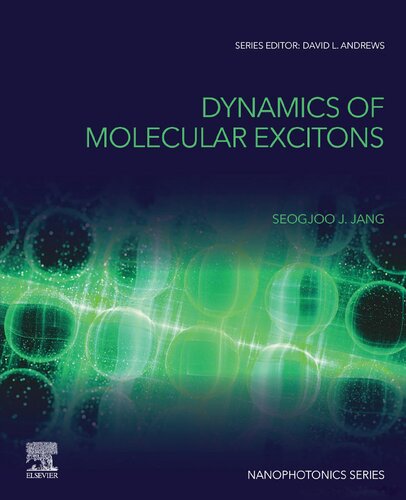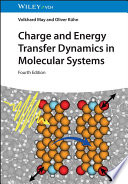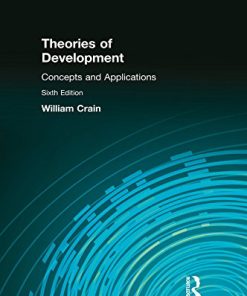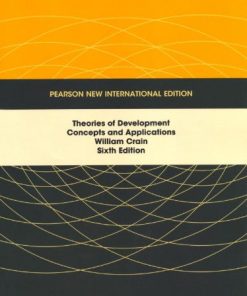Dynamics of Molecular Excitons Theories and Applications Nanophotonics 1st Edition by Seogjoo Jang 0081023367 9780081023365
$50.00 Original price was: $50.00.$25.00Current price is: $25.00.
Dynamics of Molecular Excitons: Theories and Applications (Nanophotonics) 1st Edition by Seogjoo J. Jang – Ebook PDF Instant Download/DeliveryISBN: 0081023367, 9780081023365
Full download Dynamics of Molecular Excitons: Theories and Applications (Nanophotonics) 1st Edition after payment.

Product details:
ISBN-10 : 0081023367
ISBN-13 : 9780081023365
Author : Seogjoo J. Jang
Dynamics of Molecular Excitons provides a comprehensive, but concise description of major theories on the dynamics of molecular excitons, intended to serve as a self-contained resource on the topic. Designed to help those new to this area gain proficiency in this field, experts will also find the book useful in developing a deeper understanding of the subject.
The starting point of the book is the standard microscopic definition of molecular Hamiltonians presented in commonly accepted modern quantum mechanical notations. Major assumptions and approximations involved in constructing Frenkel-type exciton Hamiltonians, which are well established, but are often hidden under arcane notations and approximations of old publications, are presented in detail. This will help quantum chemists understand the major assumptions involved in the definition of commonly used exciton models.
Dynamics of Molecular Excitons: Theories and Applications (Nanophotonics) 1st Table of contents:
1 Introduction
1.1 Motivation and objective
1.2 Frenkel and Wannier excitons
1.2.1 A brief overview
1.2.2 Model Hamiltonians for Frenkel excitons
1.2.2.1 Linear chain
1.2.2.2 Circular chain
1.2.3 Semiclassical model Hamiltonians for Wannier excitons
1.3 Disorder, fluctuations, and measure of delocalization
1.4 Utility and limitations of exciton models
2 Microscopic derivation of Frenkel exciton-bath Hamiltonian
2.1 Aggregates of chromophores
2.1.1 Preliminary step: Hamiltonian of each chromophore in the adiabatic basis
2.1.2 Inter-chromophore interaction Hamiltonian terms in the adiabatic basis of each chromophore
2.1.3 Single exciton Hamiltonian in the site excitation basis
2.1.3.1 General expression
2.1.3.2 Crude adiabatic approximation
2.1.3.3 Minimal Frenkel exciton-bath model
2.2 Aggregates of chromophores embedded in host media
2.2.1 General consideration
2.2.2 Linearly coupled harmonic oscillator bath model
2.3 Summary and additional remarks
3 Linear spectroscopy of molecular excitons
3.1 Absorption lineshape
3.1.1 General formalism
3.1.2 Diagonal approximation in the exciton basis
3.1.3 Projection operator formalism
3.1.4 Second order approximation for exciton-bath coupling
3.1.5 Linearly coupled harmonic oscillator bath
3.1.5.1 Diagonal approximation in the exciton basis
3.1.5.2 Second order QME lineshape
3.2 Stimulated emission lineshape
3.3 Model calculations
3.4 Summary and additional remarks
4 Exciton transfer rates and hopping dynamics
4.1 Transfer between two exciton states: Förster theory’s and its generalizations
4.1.1 General rate expression
4.1.2 Constant resonance coupling and independent baths
4.1.3 Inelastic transfer and independent baths
4.2 Transfer between groups of exciton states
4.2.1 General rate expression
4.2.2 Constant resonance coupling and independent baths
4.3 Master equation approaches and long range exciton hopping dynamics
4.4 Summary and additional remarks
5 Quantum dynamics of molecular excitons
5.1 Projection operator formalism
5.1.1 Quantum master equations for reduced exciton density operator
5.1.1.1 Time nonlocal equation
5.1.1.2 Time local equation
5.1.2 Quantum master equations for populations
5.1.2.1 Time nonlocal equation
5.1.2.2 Time local equation
5.2 Second order approximations
5.2.1 Second order QMEs for reduced exciton density operator
5.2.1.1 Time nonlocal equation
5.2.1.2 Time local equation
5.2.2 Second order QMEs for populations
5.2.2.1 Time nonlocal equation
5.2.2.2 Time local equation
5.3 Fourth order approximations
5.3.1 QMEs for the reduced system density operator
5.3.1.1 Time nonlocal equation
5.3.1.2 Time local equation
5.4 Harmonic oscillator bath with linear coupling
5.4.1 Second order QMEs
5.4.2 Second order polaron transformed QME (PQME)
5.4.2.1 General formalism
5.4.2.2 Model calculations
5.5 Summary and additional remarks
6 Excitons and quantum light
6.1 Interaction of materials with quantum light
6.2 Microscopic derivation of Förster’s spectral overlap expression
6.2.1 Spontaneous emission
6.2.2 Absorption
6.2.3 Förster’s spectral overlap expression
6.3 Polariton
6.4 Summary and additional remarks
7 Time-resolved nonlinear spectroscopy of excitons
7.1 General assumption of material Hamiltonian
7.2 Two-pulse spectroscopy
7.2.1 General expression
7.2.2 Pump-probe spectroscopy
7.3 Four wave mixing spectroscopy
7.3.1 Response function formalism
7.4 Summary and additional remarks
8 Examples and applications
8.1 Excitons in natural light harvesting complexes
8.1.1 FMO complex of green sulfur bacteria
8.1.2 LH2 complex of purple bacteria
8.1.3 PBP of cryptophyte algae
8.2 Excitons for photovoltaic devices
8.3 Excitons for structural determination
8.3.1 FRET efficiency
8.3.2 Beyond FRET efficiency measurement
8.4 Summary and additional remarks
9 Summary and outlook
People also search for Dynamics of Molecular Excitons: Theories and Applications (Nanophotonics) 1st:
types of molecular dynamics
molecular dynamics explained
what is molecular dynamics
theory of molecular dynamics
dynamics of molecular collisions conference
Tags: Dynamics, Molecular Excitons, Theories, Applications, Nanophotonics, Seogjoo Jang
You may also like…
Physics - Others
Politics & Philosophy - Social Sciences
Theories of development : concepts and applications 6th Edition












